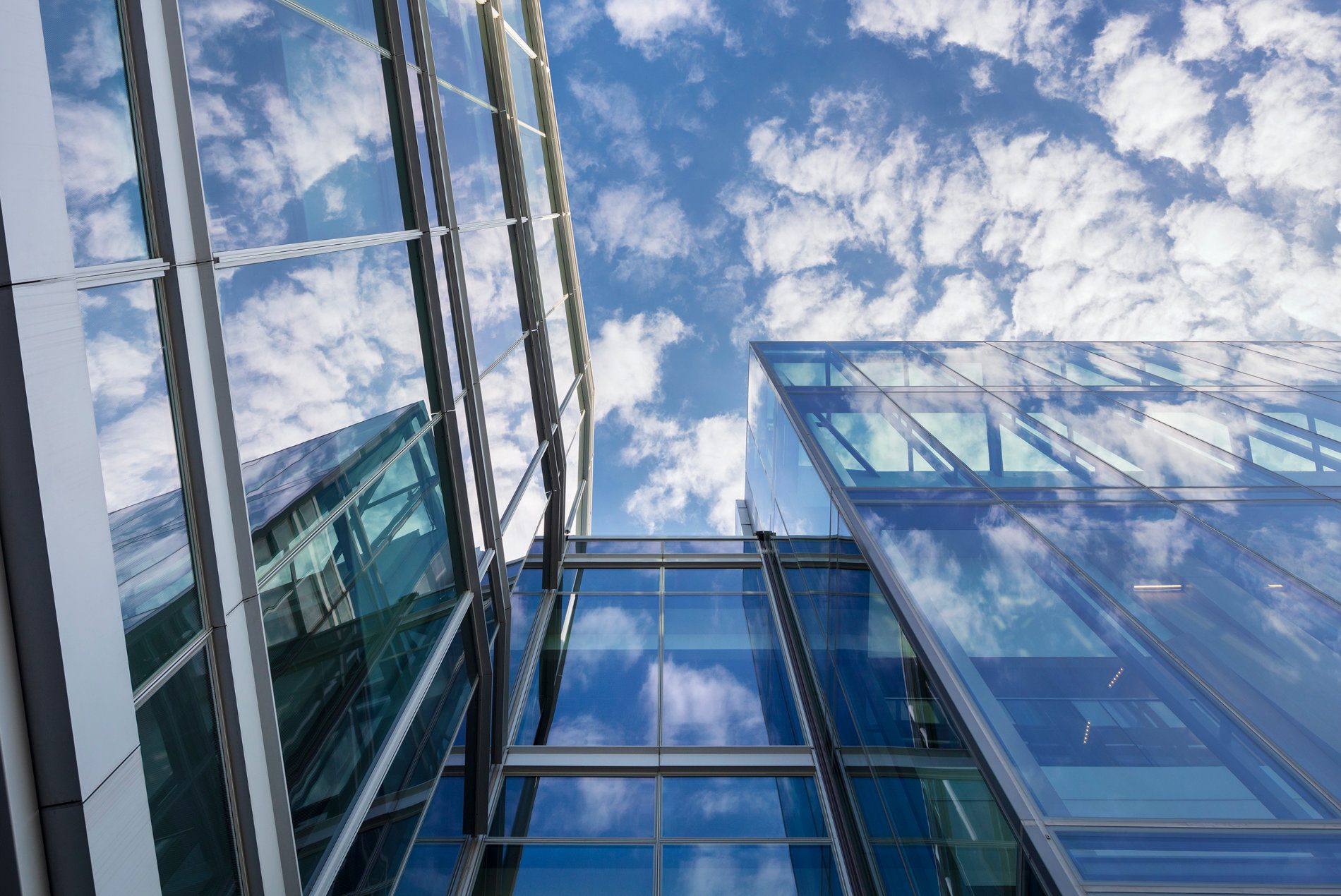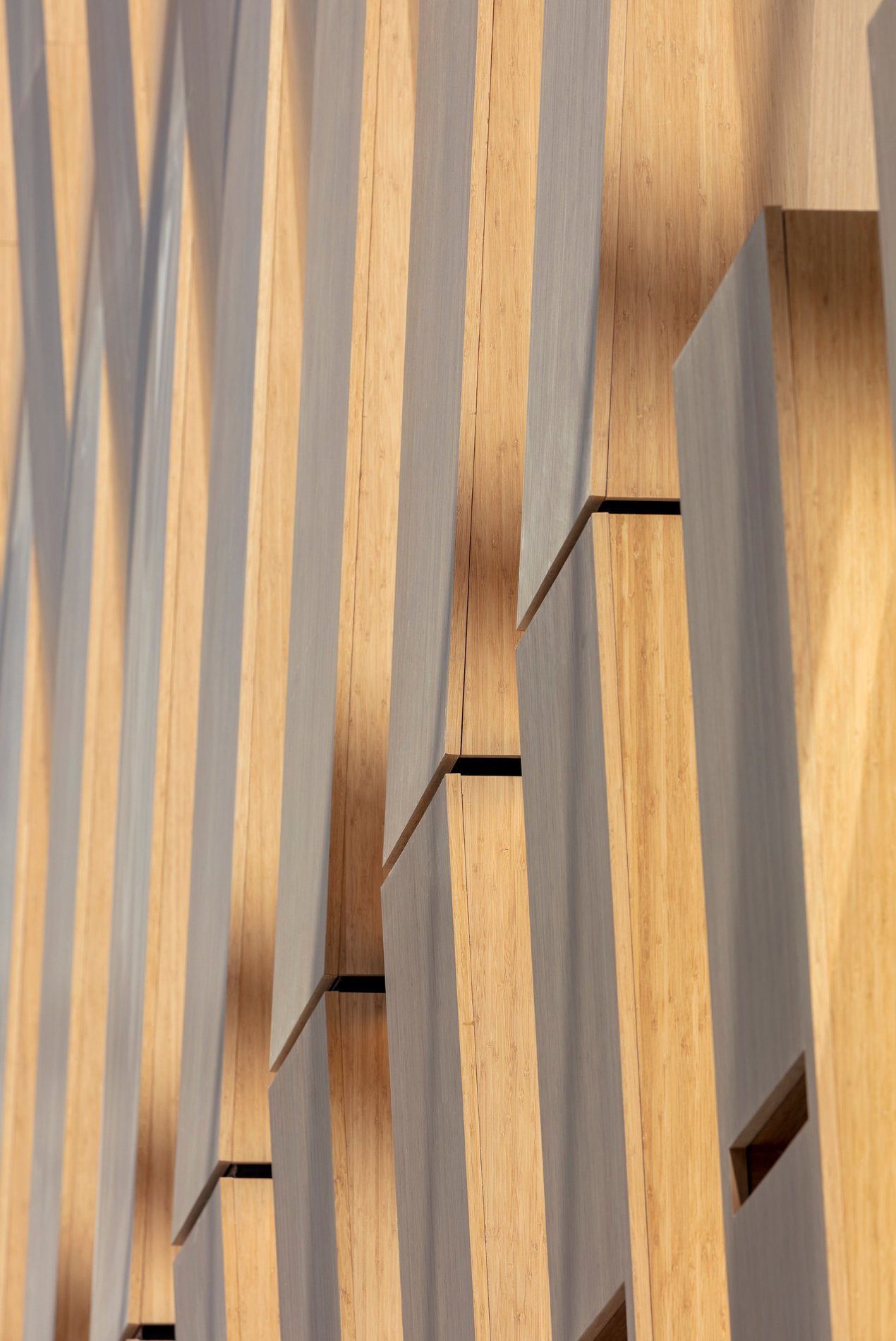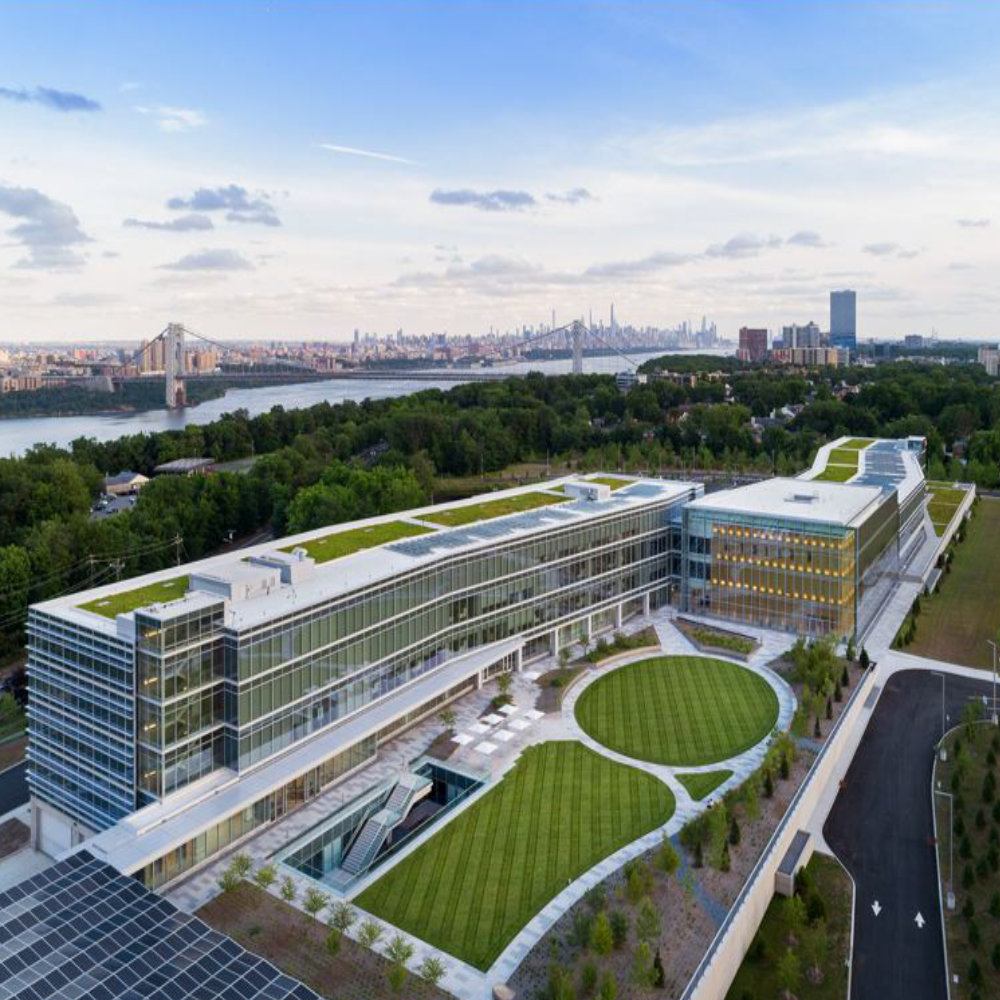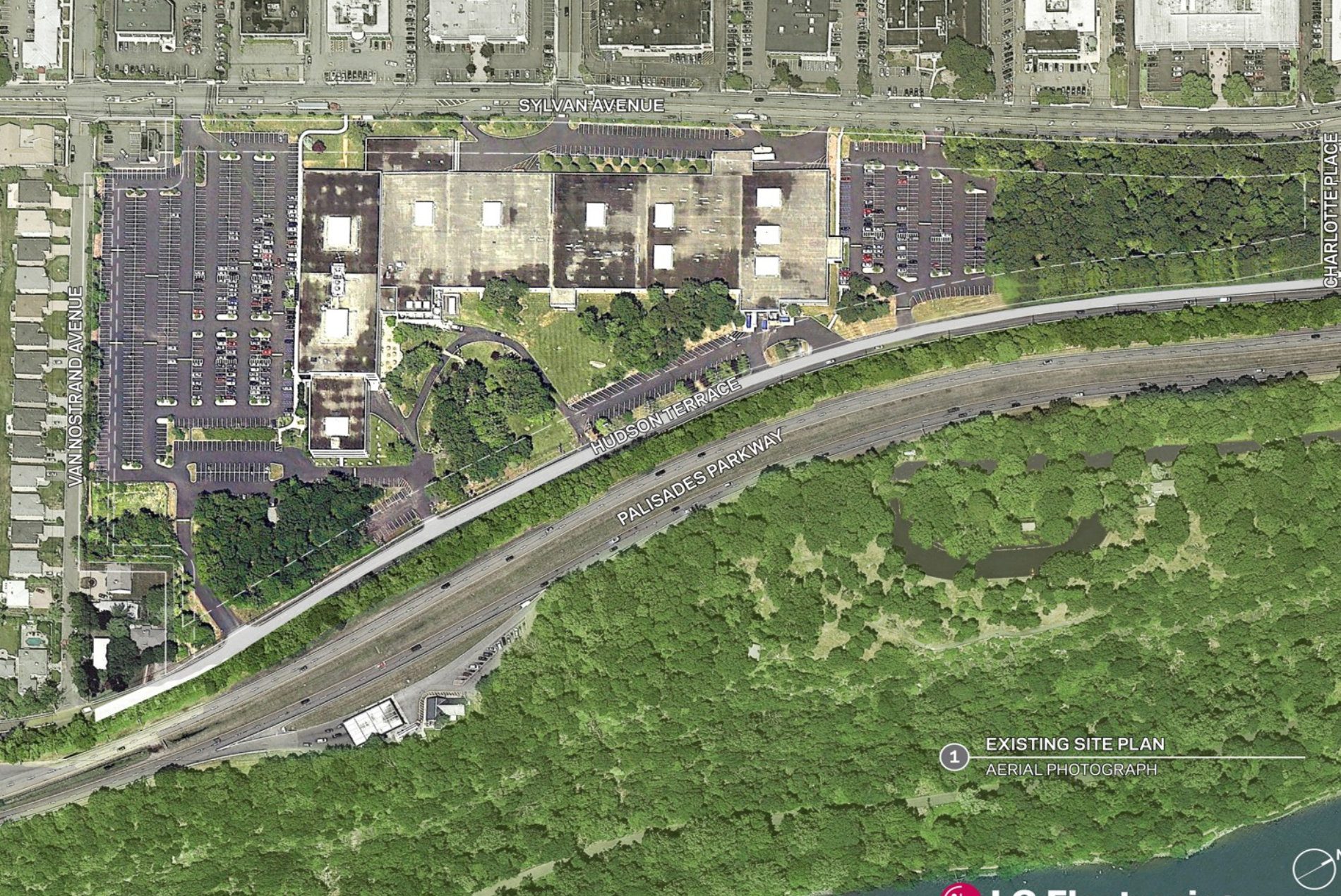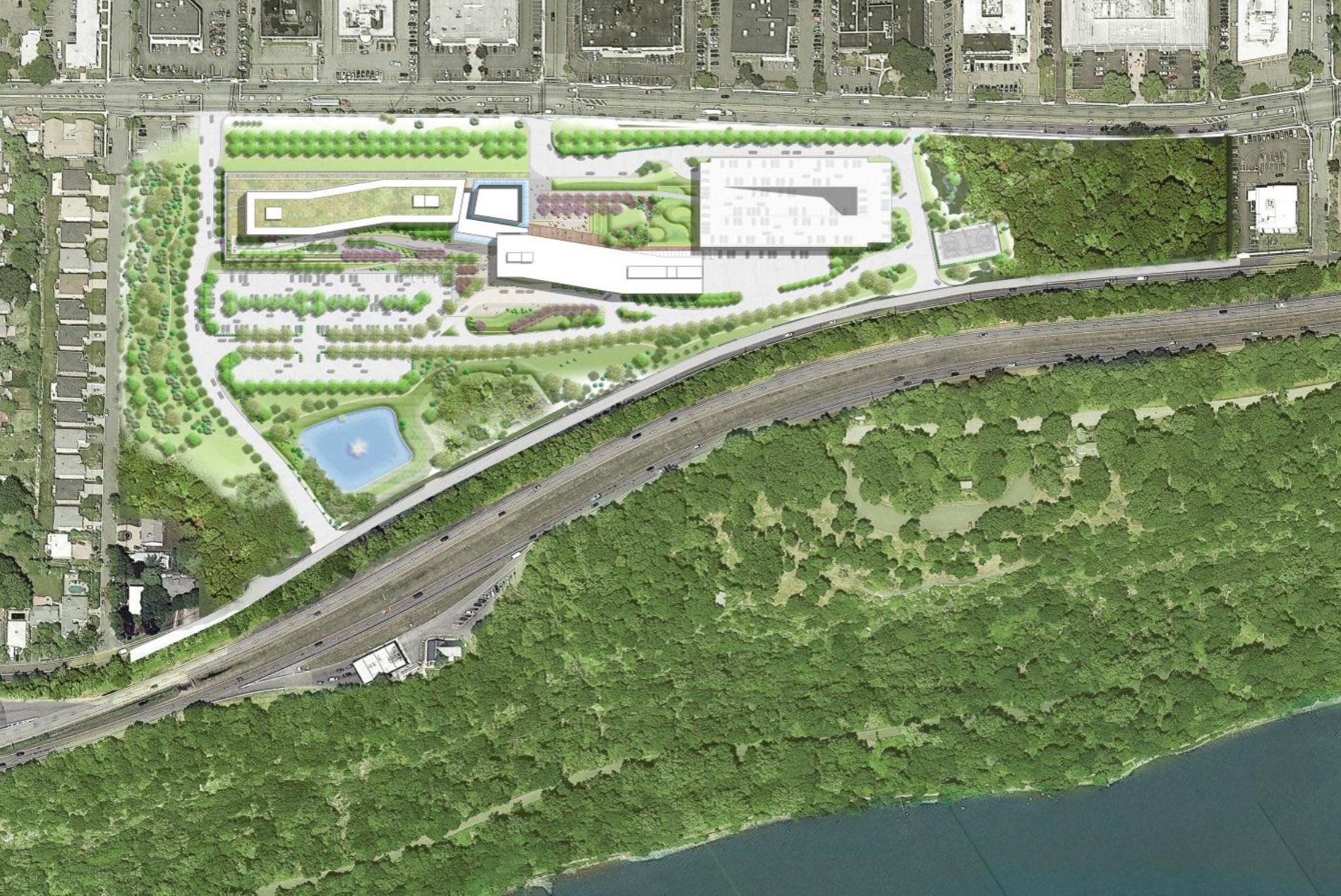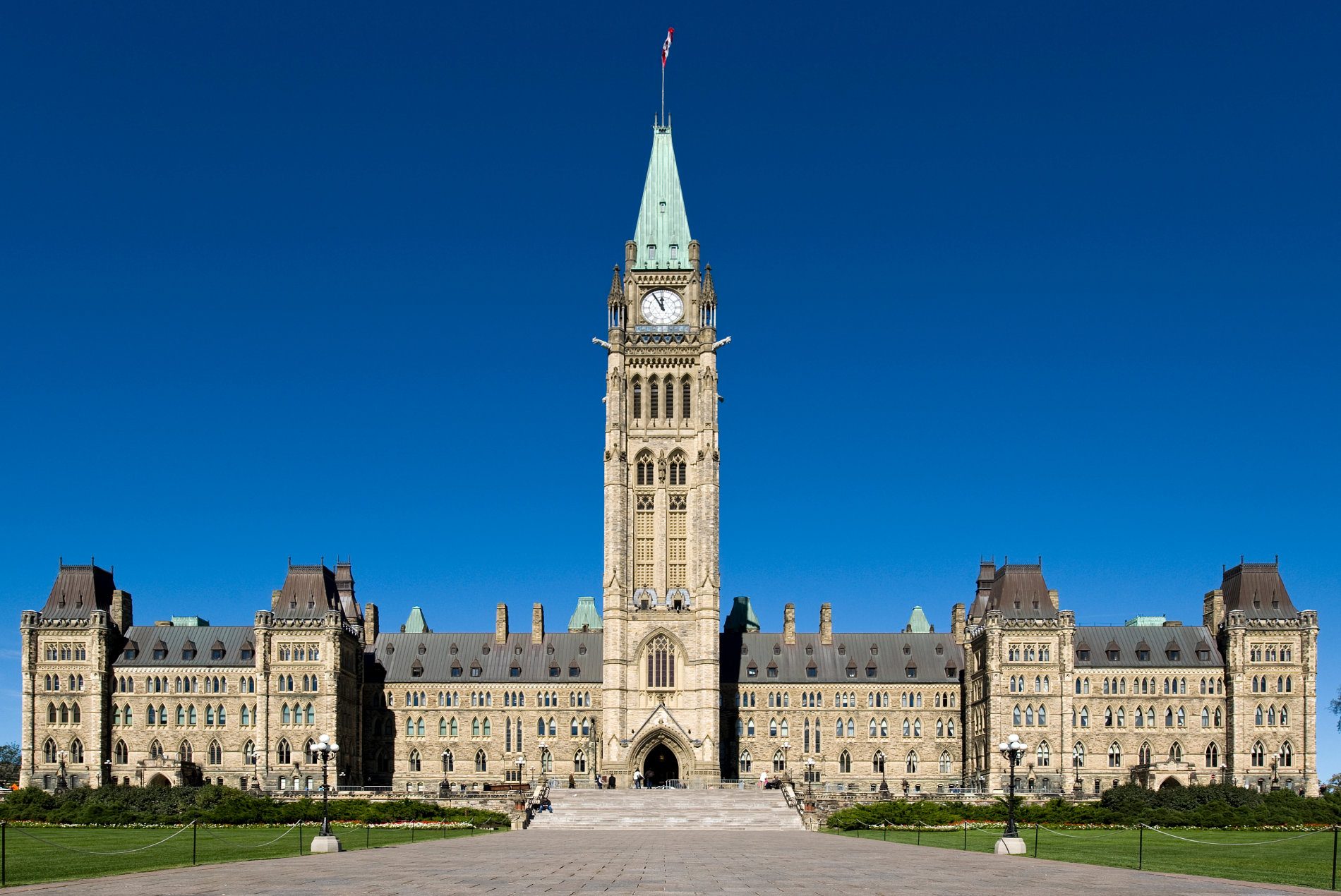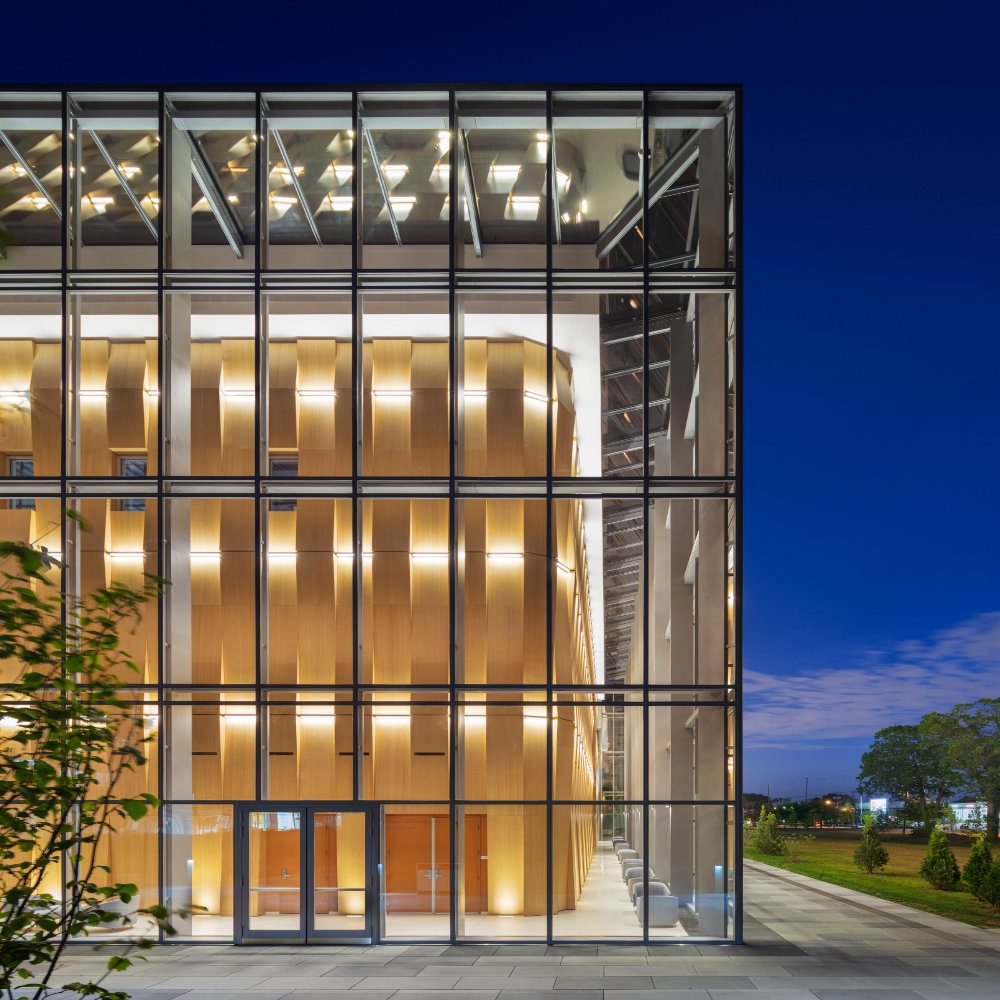
LG and the design team worked closely with community stakeholders and local environmental organizations for more than three years to arrive at a building height that fell below the tree line when viewed from across the river.
The 1,300-foot-long horizontal headquarters consists of two narrow office wings resting on a vegetated plinth feathered into the landscape. A three-story glass ‘cube’ with a public atrium links the two buildings. This 18,000-sq.-ft., custom-built glass box links the two office wings and acts as the fulcrum for campus activity.
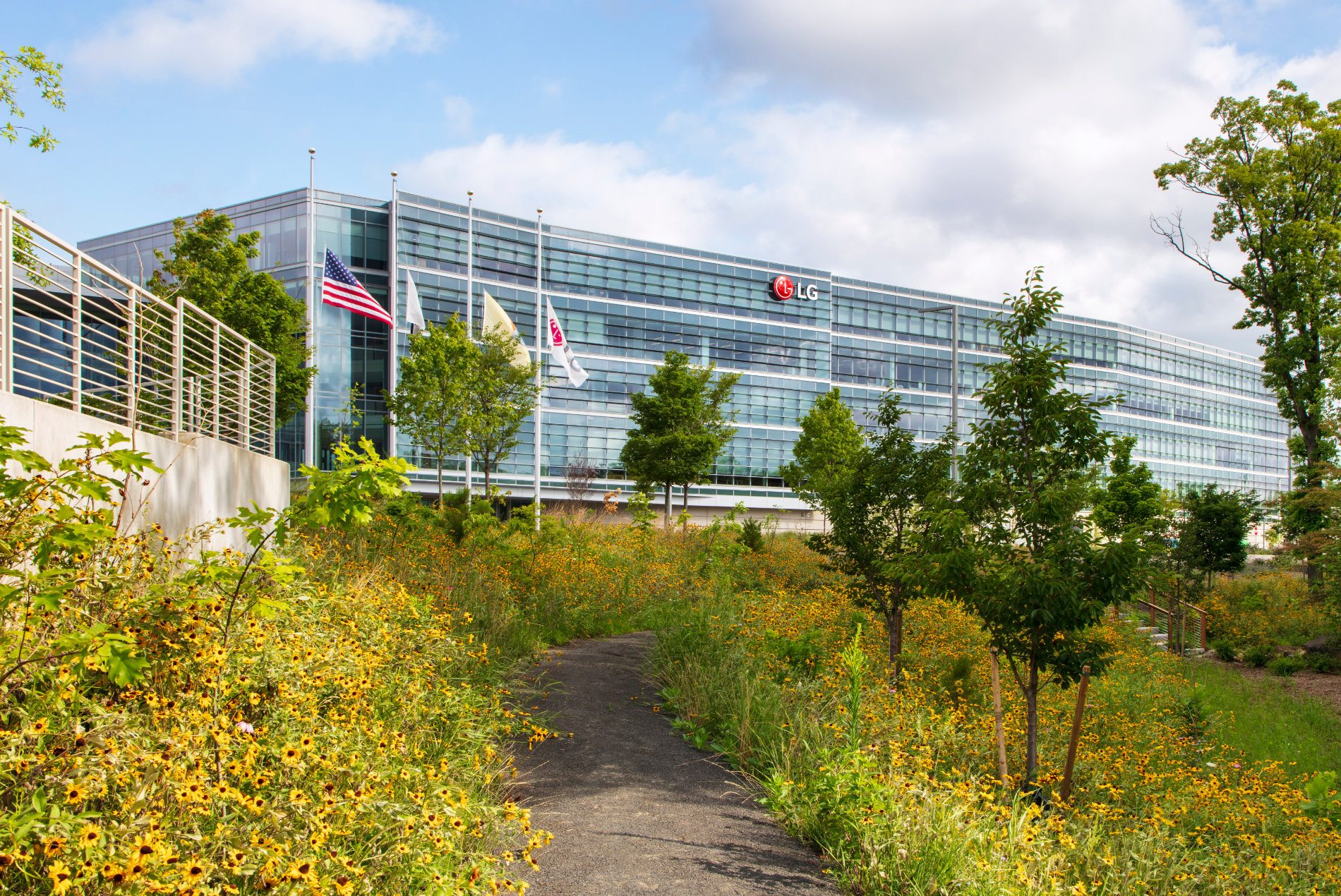
This ‘groundscraper’ design preserved the natural viewshed of the Palisades—a line of steel cliffs along the west side of the Hudson River—from New York, the Palisades Parkway, Palisades Intestate Park and the George Washington Bridge.
Setting the building height below the top of the tree canopy also prevents it from interfering with a significant migratory bird path along the river. In areas where green roofs or site vegetation are close to glazing, the building has bird-deterrent glass.
A landscape berm and restored woodlands on the site’s southern edge provide a buffer between the headquarters and an adjacent residential neighborhood.
The design enhances the local ecosystem by protecting six surrounding wetlands and restoring three native woodlands, as well as several natural wildlife habitats.
The forest restoration program included adding more than 1,500 mostly mature trees. The design also added 50 percent more green space to the site. The project reduced the site’s impervious area by nearly 35 percent.
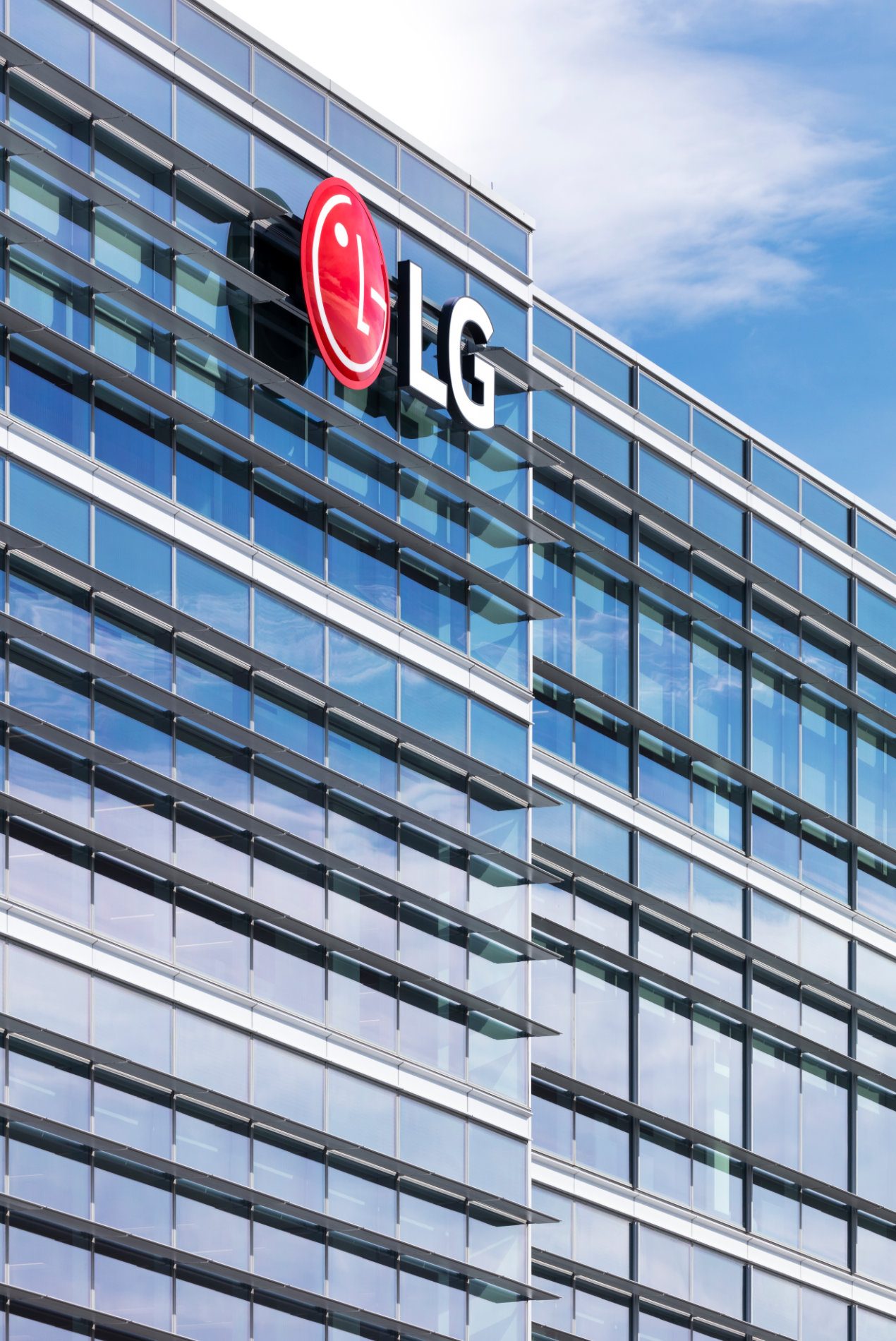
Building an environmentally responsible headquarters was a priority for LG. The campus has achieved LEED Platinum-NC certification.
Though on-site renewable energy was an early project goal, the design team also focused on load reduction. The result is a fully integrated, high-performing architectural, mechanical, lighting and building envelope design.
High-performance glazing wraps the steel-structure building. Horizontal louvers on the eastern and southern facades protect it from glare and heat gain. A folded ‘butterfly wing’ of additional horizontal louvers accentuate the main public entrance on the east side. A thermal buffer zone allows for passive solar heating in cooler months.
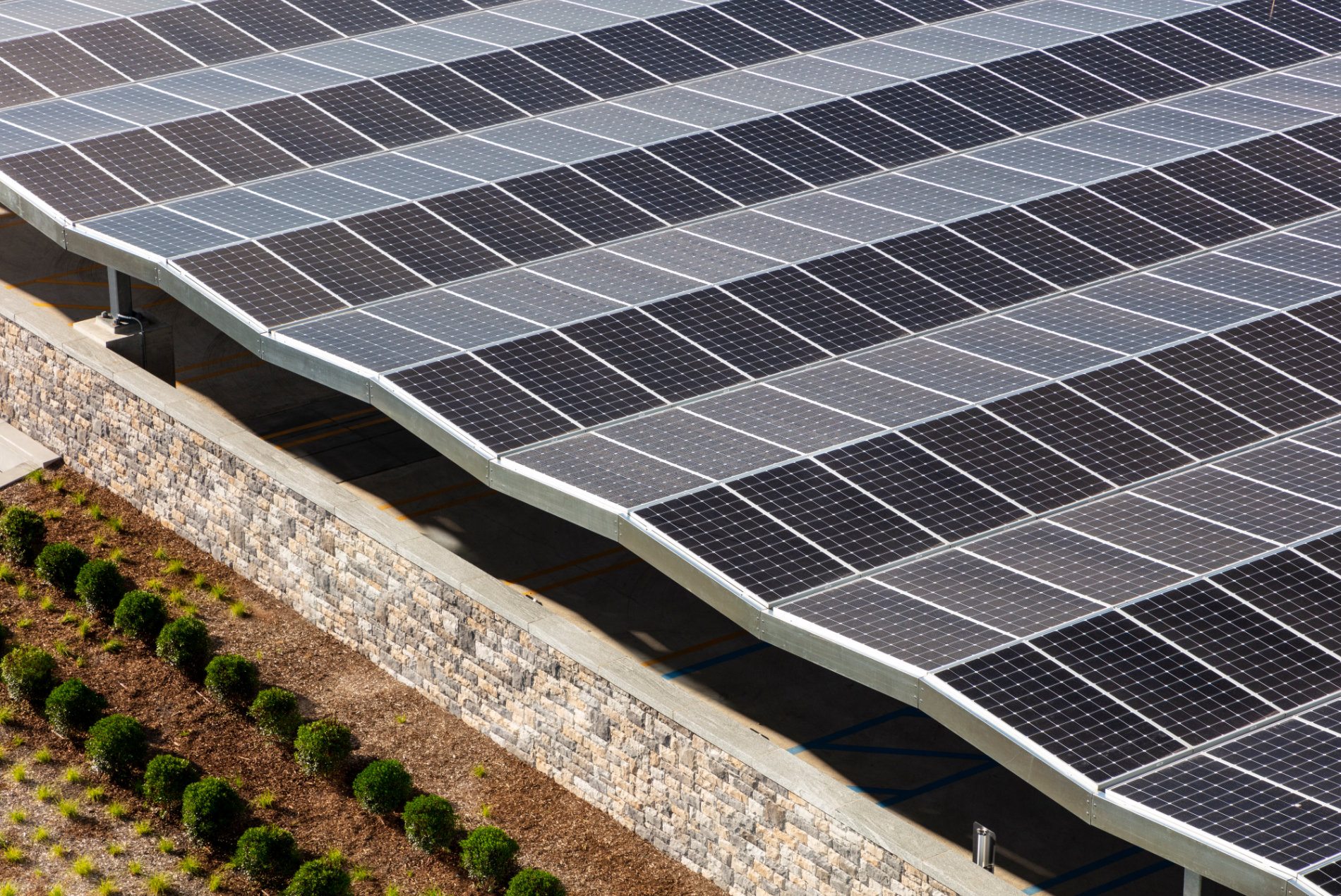
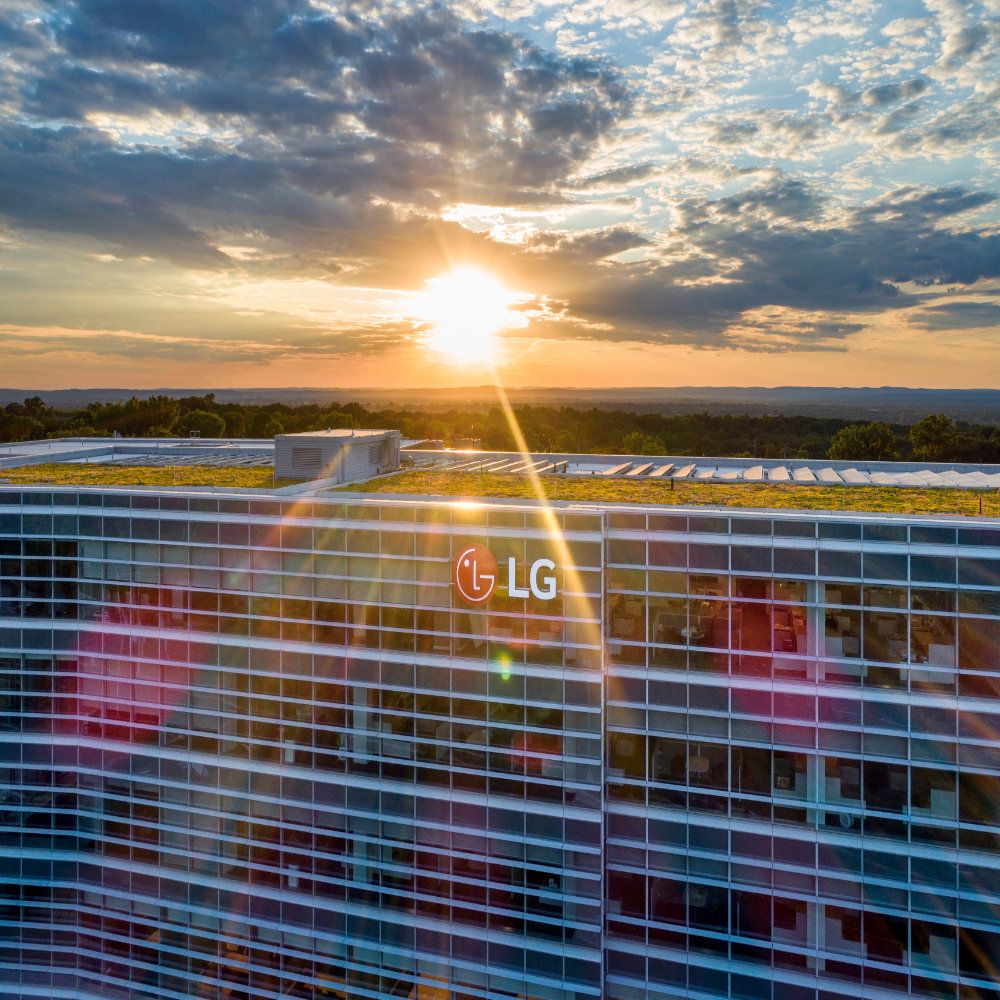
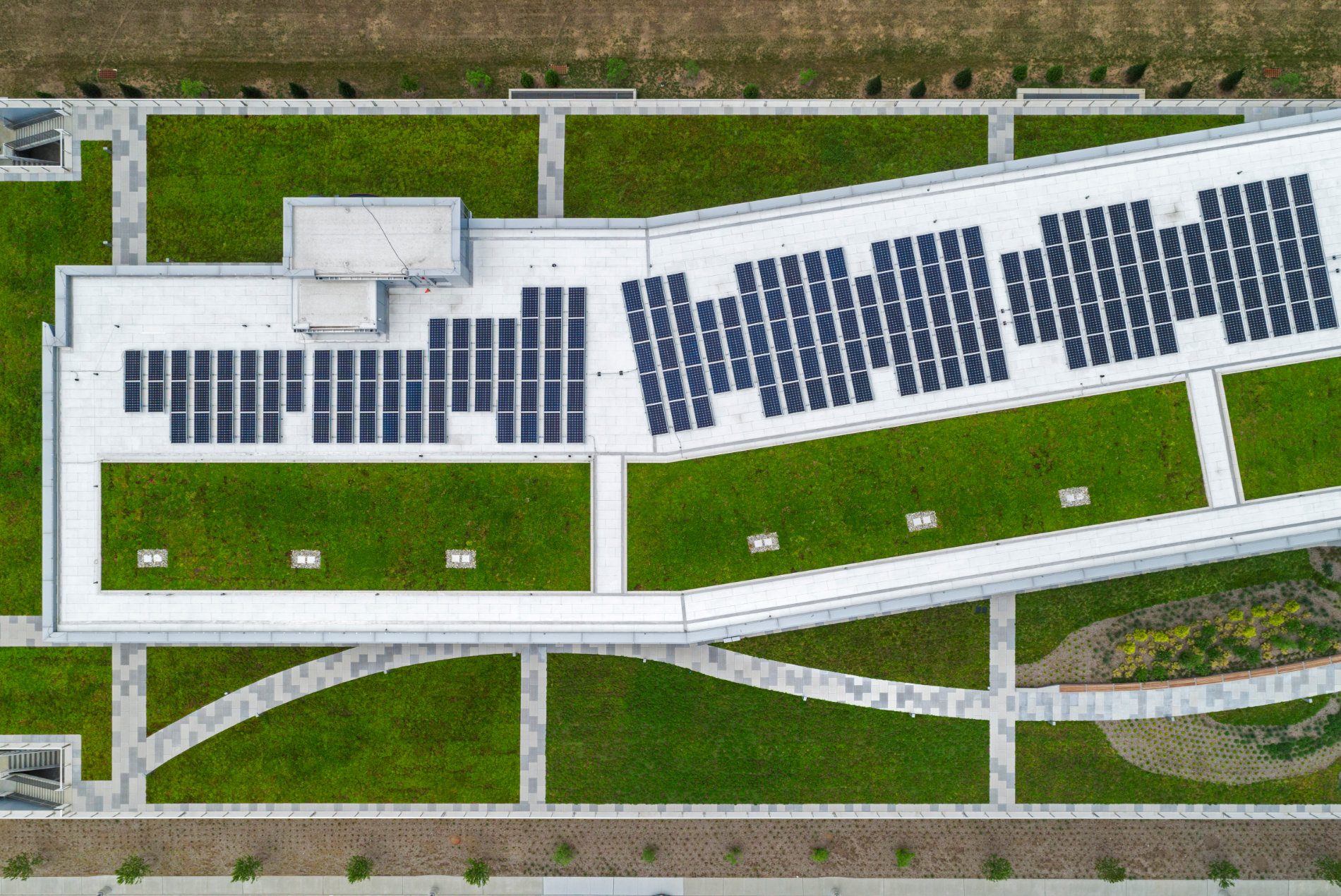
Two acres of green roofs with native plantings run alongside the PV modules atop the office wings. Using every available portion of the roof for either PVs or plantings improves climate resilience.
The green roof acts as an extension of the large dining area, drawing people outside to a central open space to interact with nature. The green roofs contribute to the site’s biodiversity and stormwater management while serving as an amenity encouraging people to relax outdoors.
The team selected materials that support the conservation of resources and are environmentally friendly. The statement woven wall that encloses the atrium cube, for example, is made of rapidly renewable bamboo.
All paints, coatings, adhesives, sealants, composite wood met the low-emitting materials criteria to avoid indoor contamination from installed building products and furniture.
Material efficiency and durability of the curtain wall led to the selection of a unitized system. The speed of installation and quality control meant that the project is less likely to suffer from moisture intrusion and associated indoor air quality and material durability problems.
84 percent of construction or demolition debris hauled off-site was recycled.
Finally, the team paid close attention to the depth and extent of bedrock below the building. The massing and sub-grade levels were crafted to limit the need for blasting and excavation.
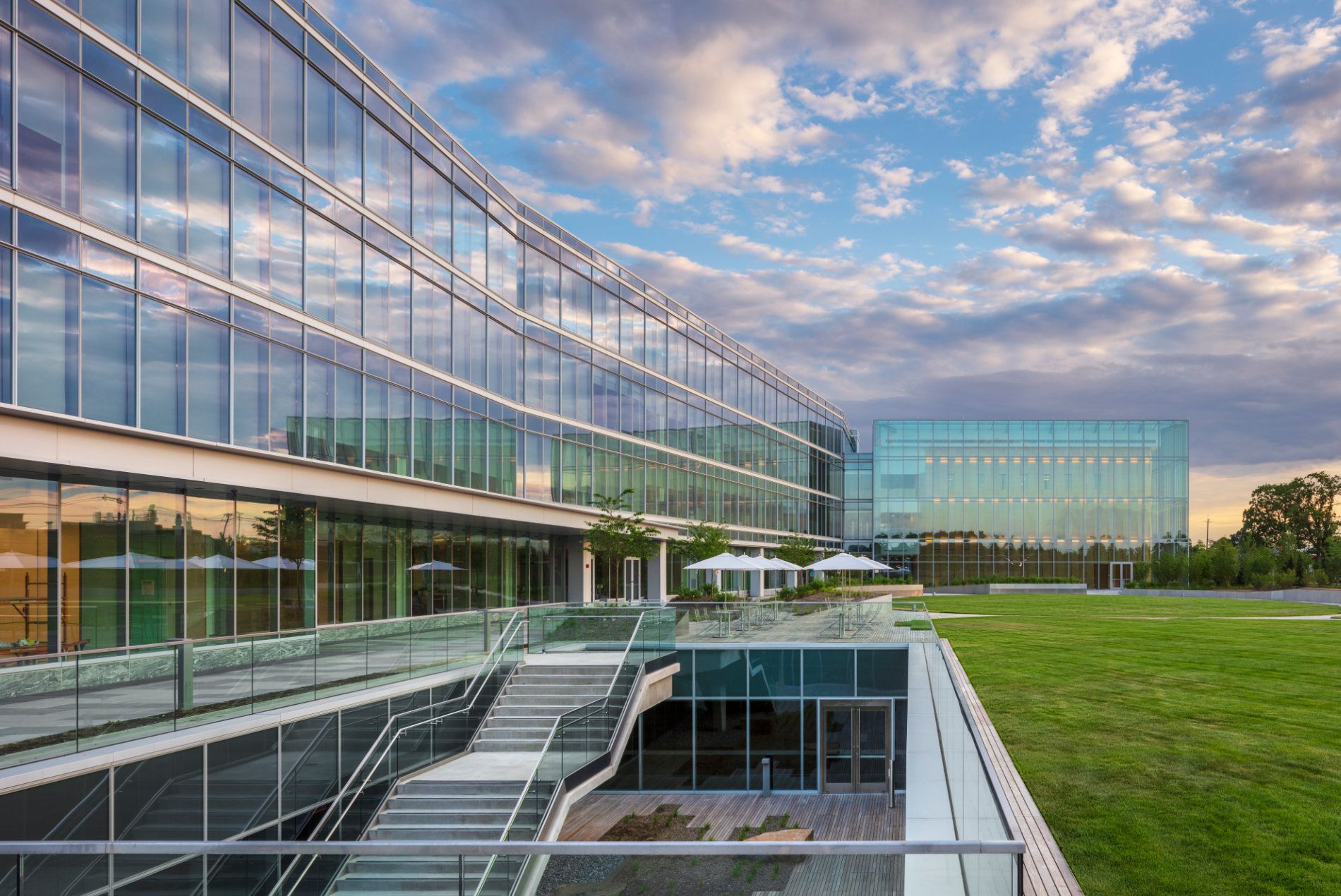
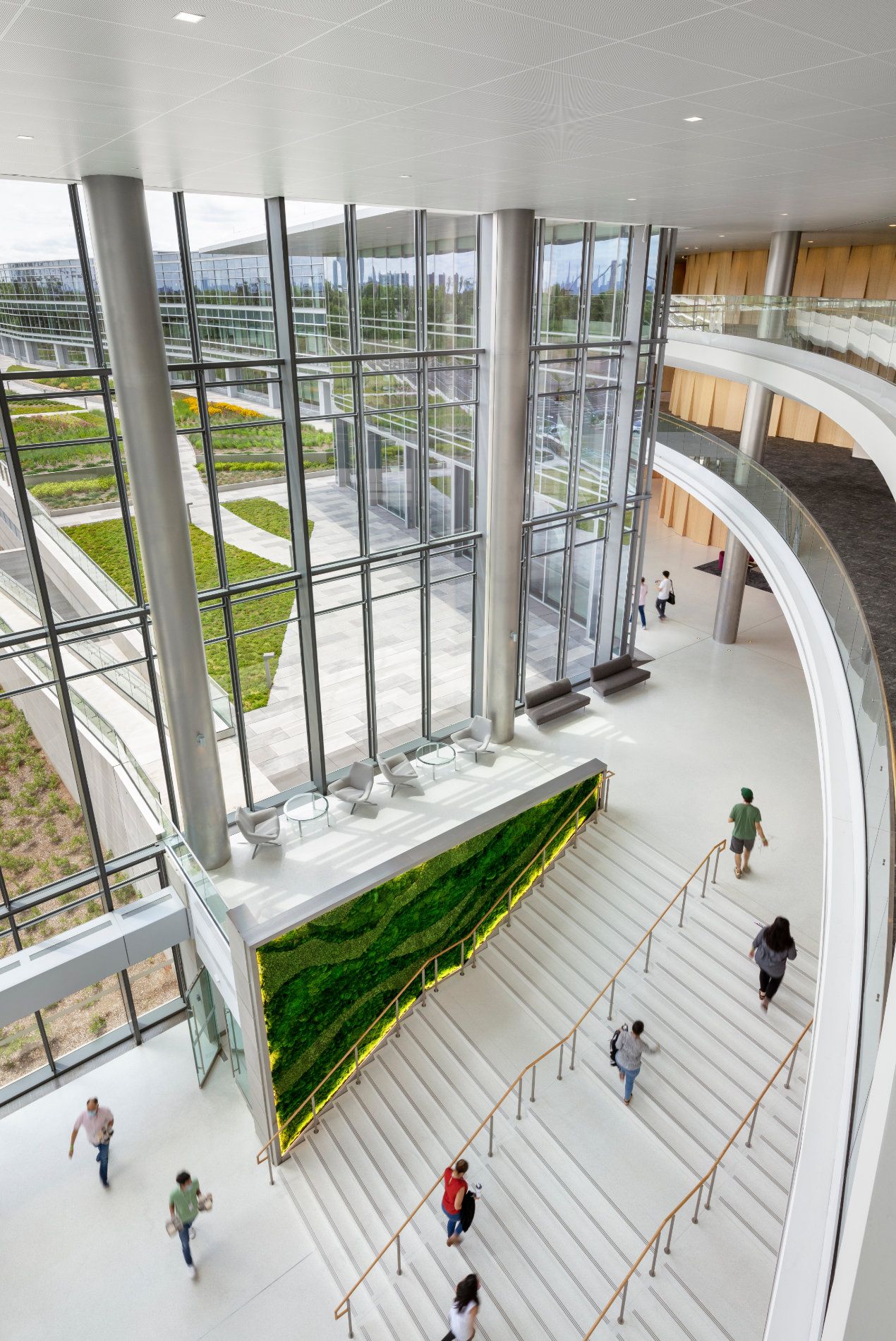
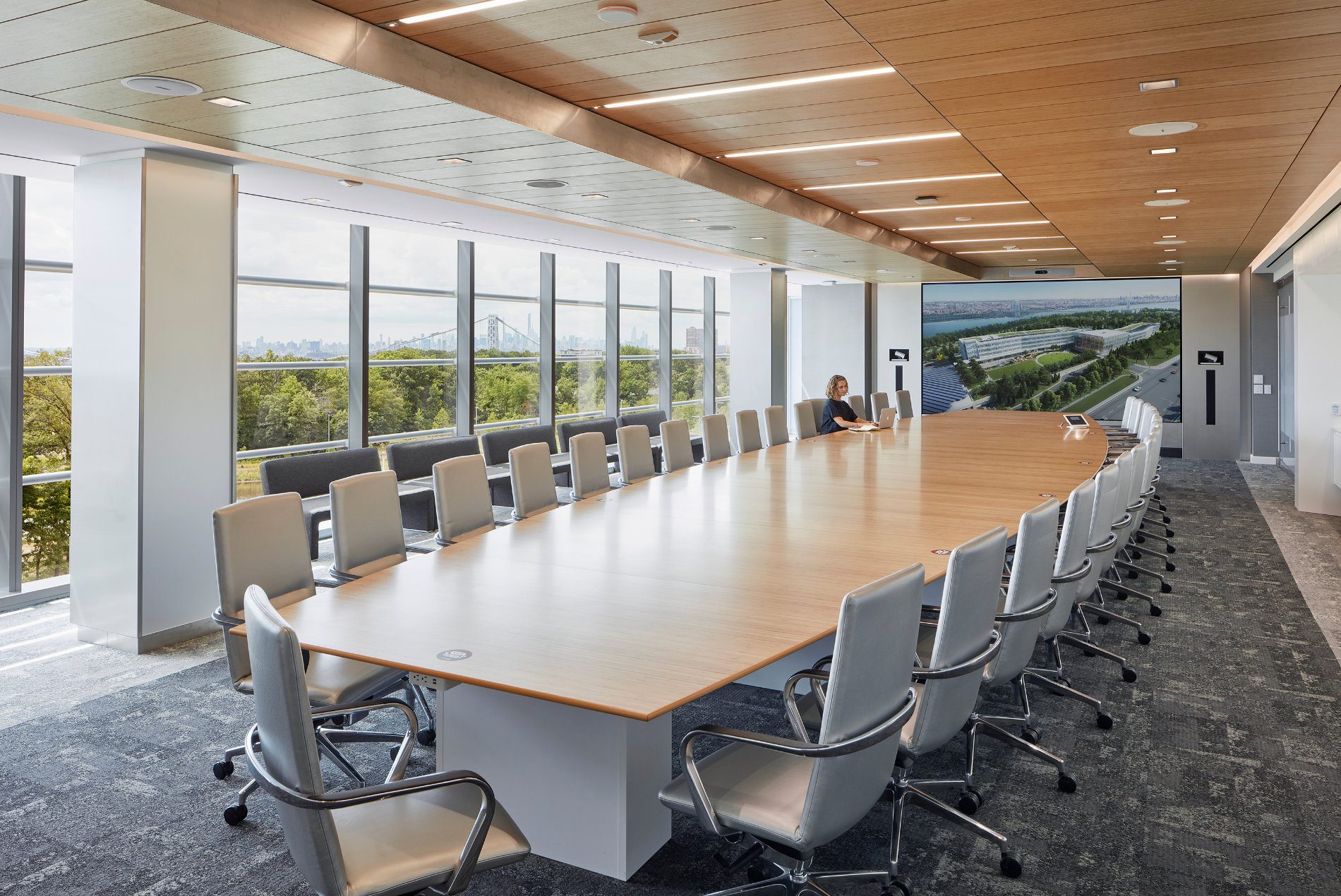
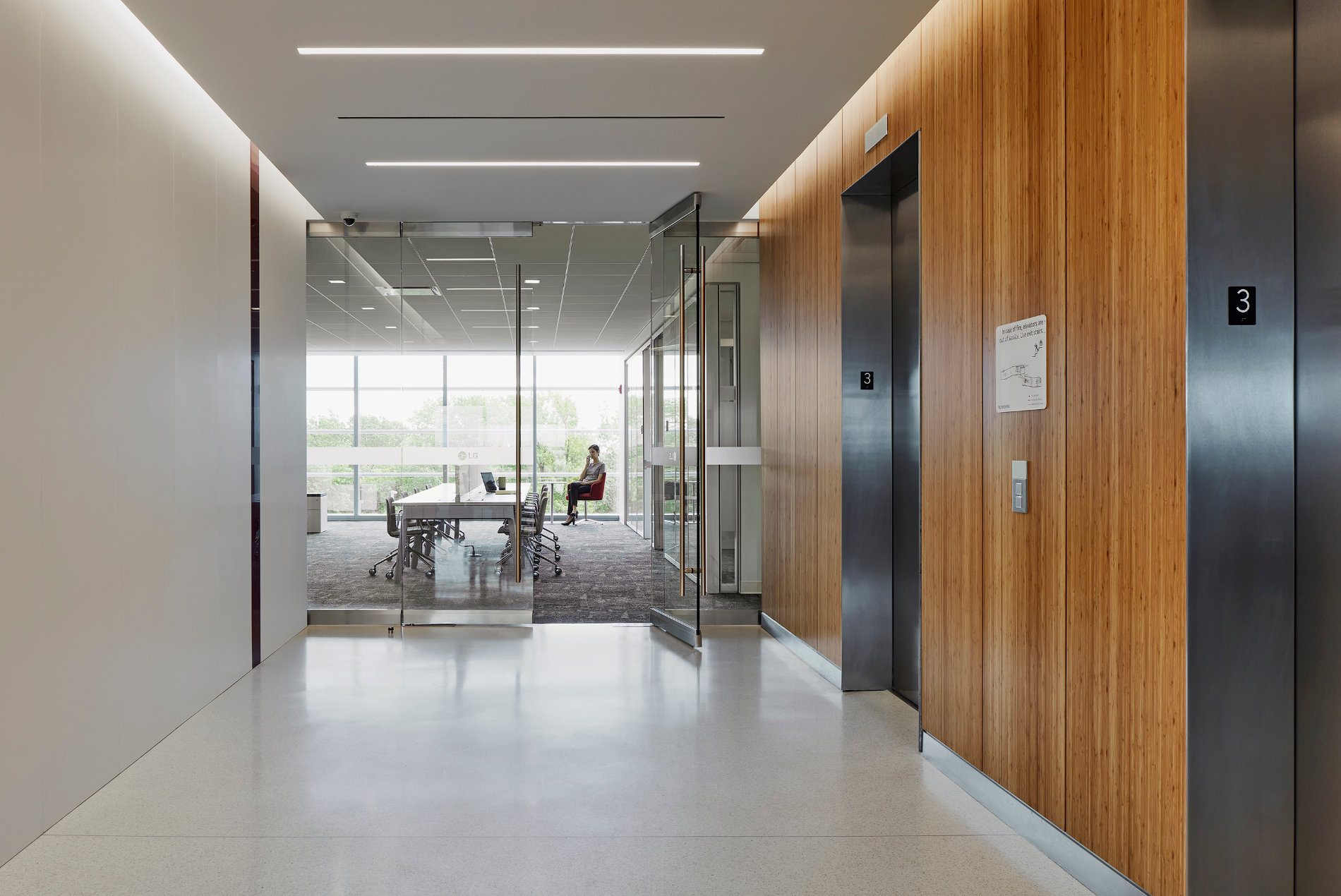
The two office wings each are less than 100 feet wide. Private offices are in the center, away from exterior windows.
The long, narrow floor plates enable daylight to reach deep into the space, reducing electricity demand. LG’s people enjoy views of the landscape and Hudson River from most parts of the building.
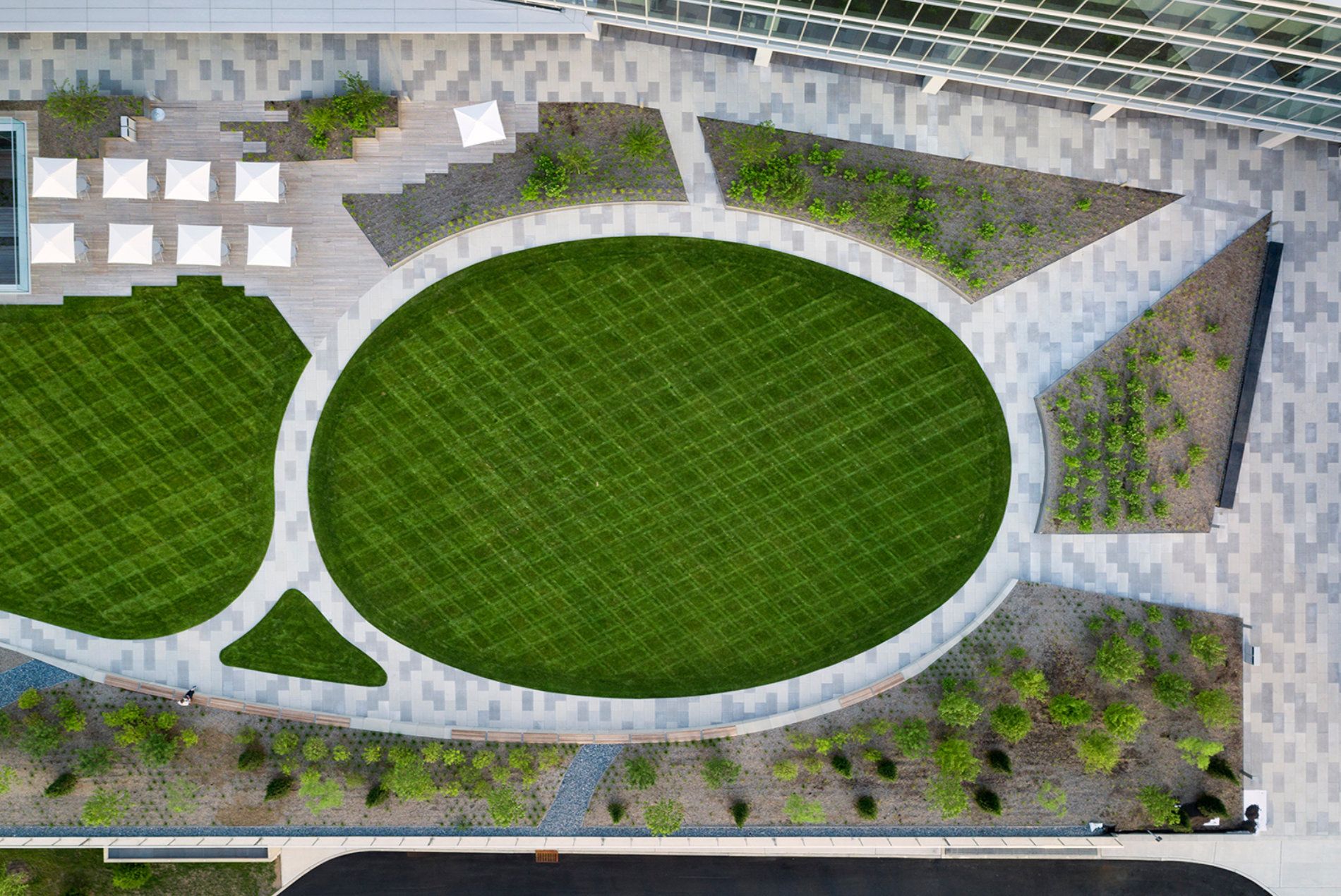
The Northeastern U.S. is predicted to experience increases in extreme precipitation, extreme heat and coastal flooding due to sea level rise and storm surge. With its emphasis on ecosystem enhancement and green infrastructure, LG’s new headquarters will prove resilient to these natural hazards exacerbated by climate change.
The increase in site vegetation and replacement of impervious roofing with green roofs creates a cooler microclimate.
Finally, the emphasis on daylighting improves passive survivability during power outages and provides an important life safety function: daylit egress.
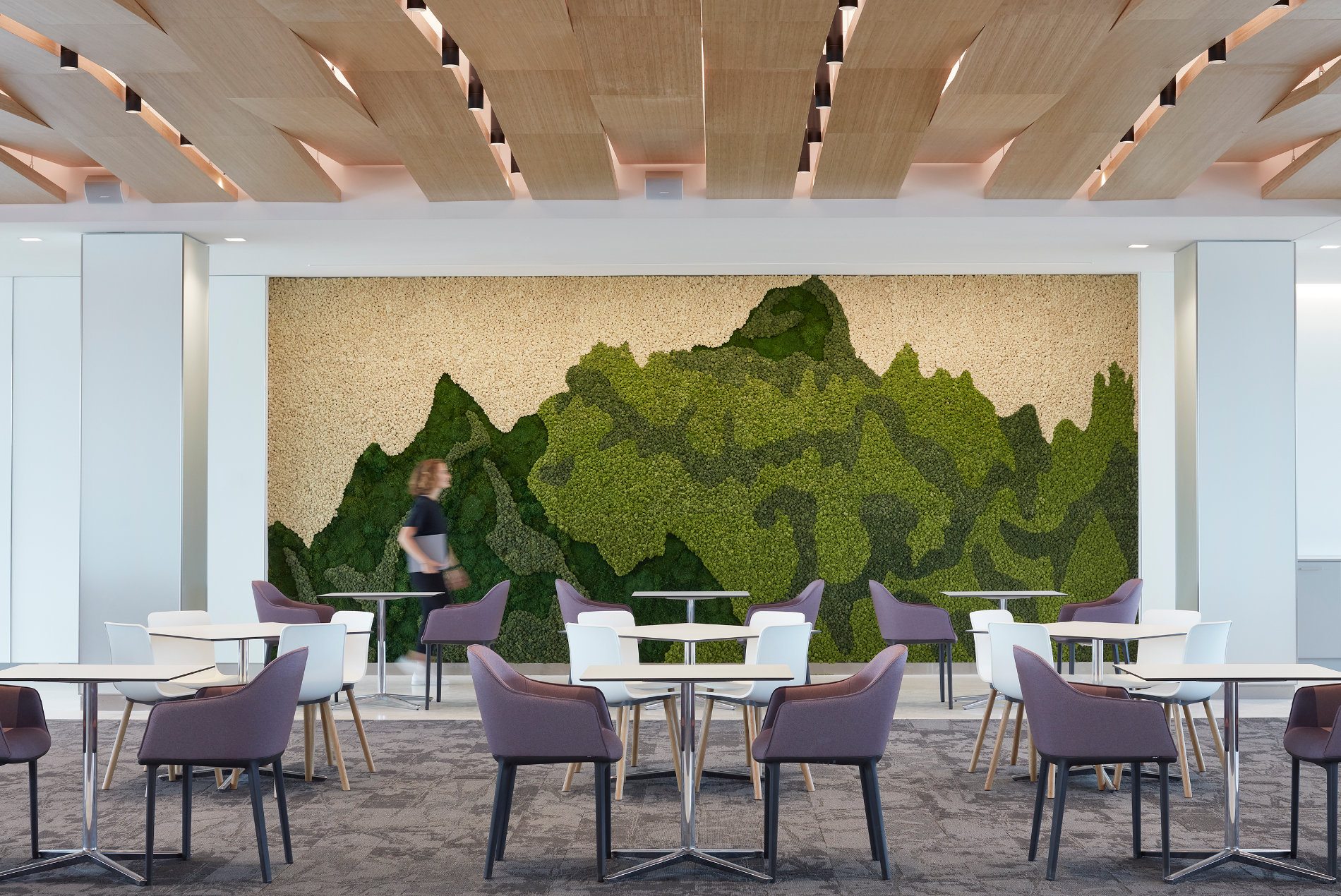
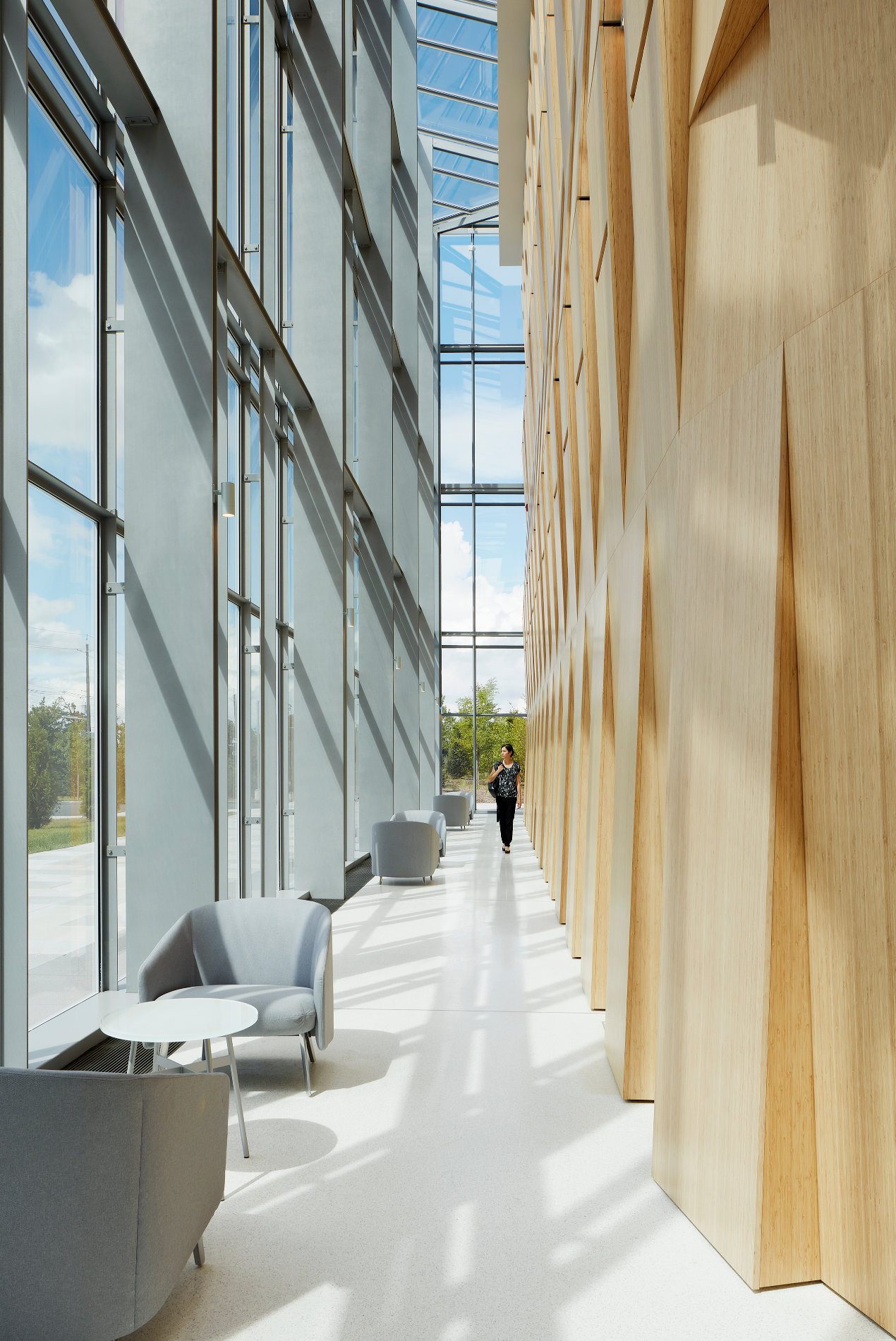
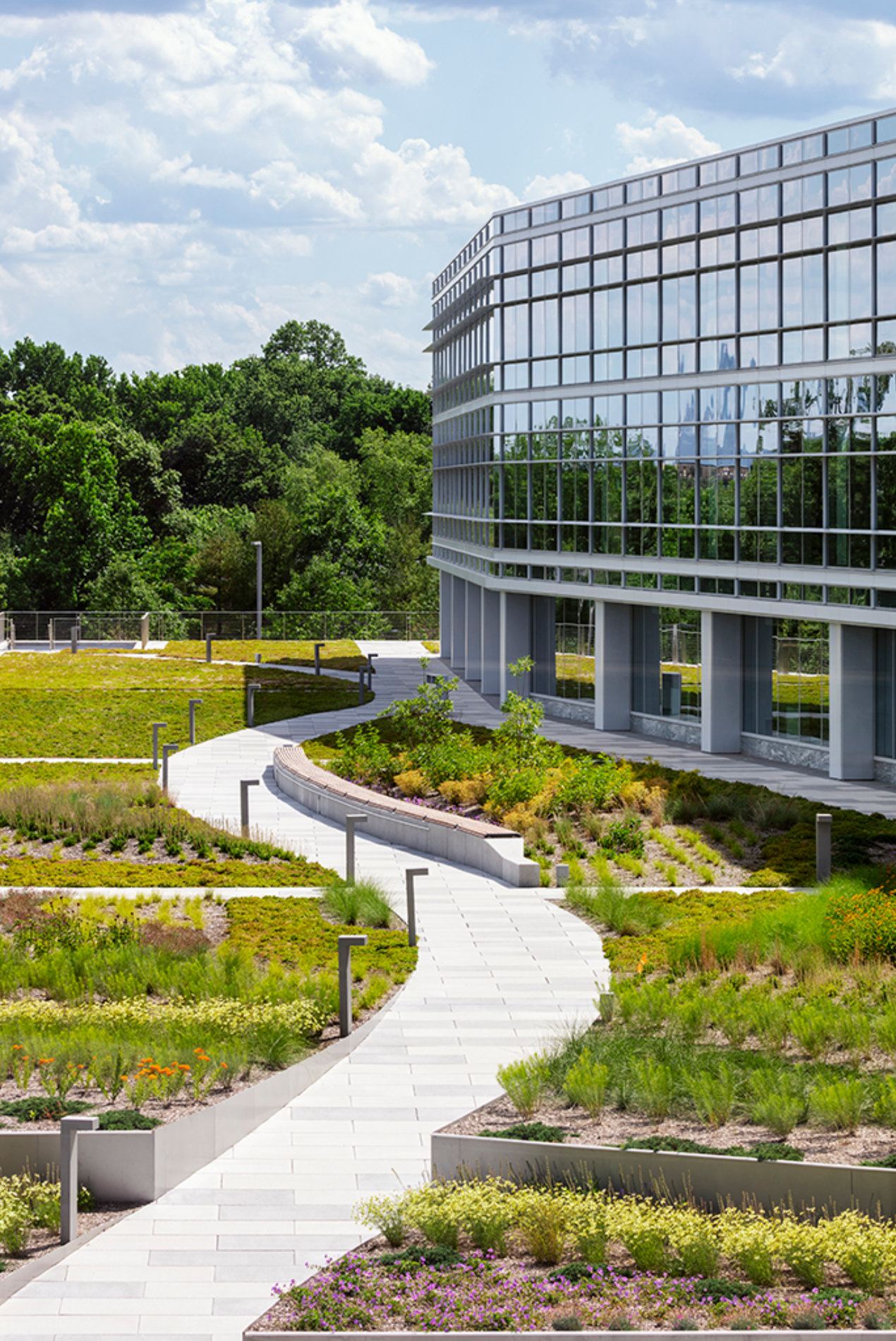
Within the building, use of efficient fixtures resulted in a 34 percent water savings over a typical design.
Outside, combining low-maintenance native vegetation with high-tech controllers, drip delivery and moisture sensors reduced use of potable water for irrigation by 96 percent
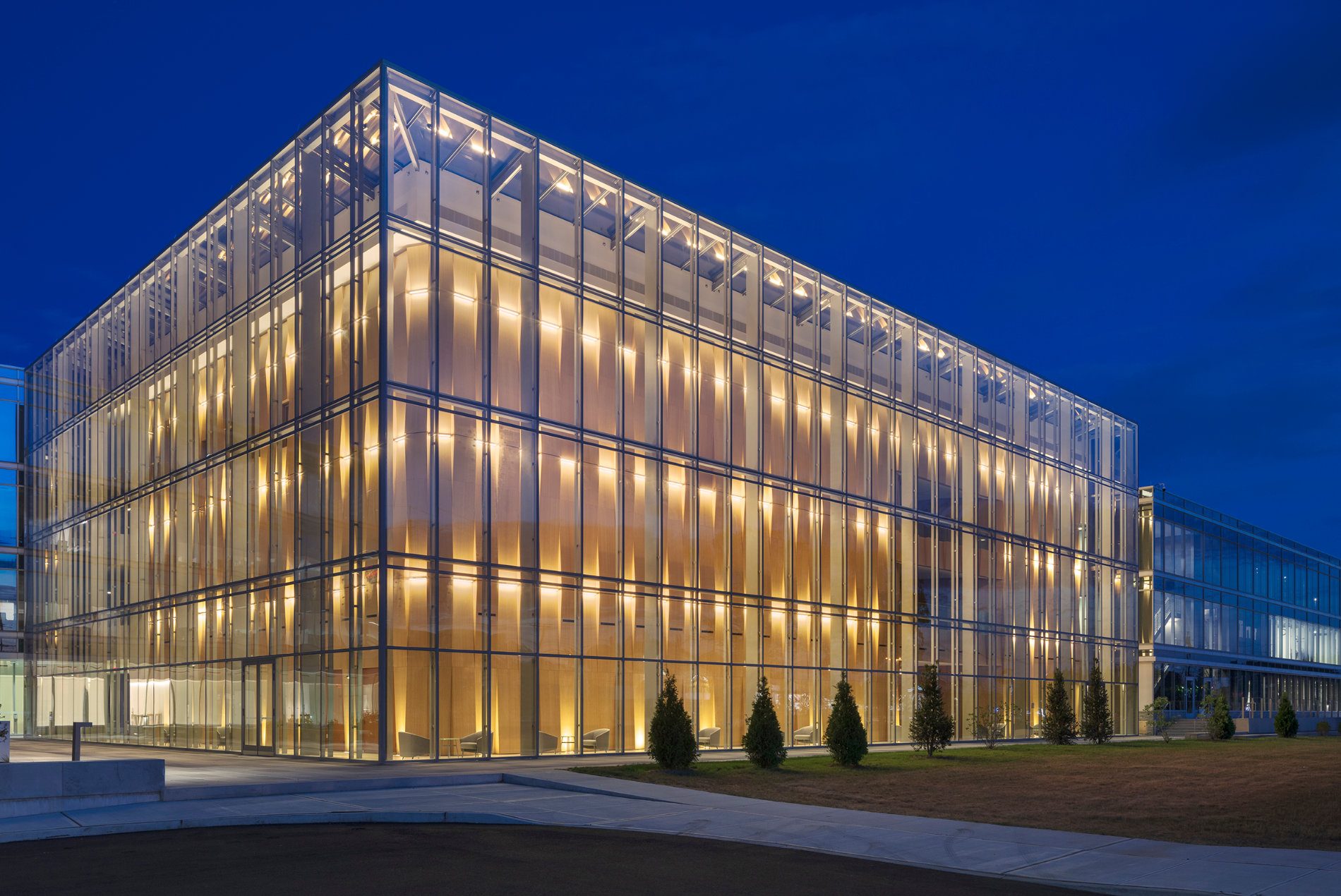
Seoul-based LG is actively engaged in the Korean community of Englewood Cliffs and will offer access to a new Community Science Center for STEM for the local school district. Exhibits will focus on STEM subjects and be open to students and groups interested in LG technology.
This Community Science Center is on the second floor of the glass cube connector.
